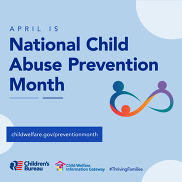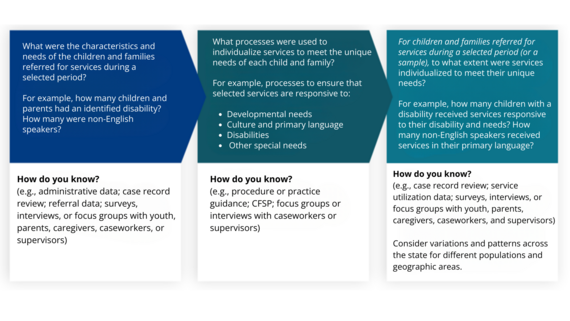
This month, we observe National Child Abuse Prevention Month, which provides child welfare agencies and leaders with an opportunity to reflect on their past approaches and recent efforts in preventing child maltreatment and supporting families within their jurisdictions. Evaluating current and past prevention efforts can help agency leaders understand what is going well, identify areas for growth, and plan strategically.
Agencies should continually seek input from the communities they serve and engage young people and families with lived experience to gather honest feedback and generate new ideas. Evaluations should be holistic and grounded in data through analyzing that data together with communities and families to help start conversations and provide crucial context and knowledge for agency leaders.
|
When reflecting on recent prevention efforts and service arrays, consider the following questions:
- Is your work community-driven and locally responsive?
- Is your work evidence-based and data-informed?
- Are the services you offer reflective of the needs of your communities?
- Are the services and supports offered by your agency culturally responsive?
- How are you partnering with young people and families around service array development?
Building and Sustaining Collaborative Community Relationships

Achieving positive outcomes for children, young people, and families requires intentional collaboration with individuals with lived experience and expertise. Agencies should work to understand how young people and families define prevention in their own communities; and then prioritize the services and support they think will make the most difference and implement prevention services driven by community input.1
The Capacity Building Center for States’ (Center’s) Building and Sustaining Collaborative Community Relationships guide helps child welfare agencies collaborate with community-based partners to assess agency services and prevention efforts, promote communication and information sharing across systems, and increase understanding of the family’s needs and provide better overall support to children and families.
|
A Data-Informed Approach to Service Array
Data use is a vital component in the process of creating a service array that is well matched to the needs of the children, young people, and families served by child welfare systems. Using data helps states and jurisdictions ensure that the right services are available, accessible, and effective.2 Strategic planning and process alignment can help agencies leverage the data they already have or are collecting to inform the evaluation of their prevention services array.
For example, CFSR Statewide Assessments look at service array from many levels, including determining whether services are accessible and can be individualized.3 States and jurisdictions can use the quantitative and qualitative data they are already compiling to write their Statewide Assessments and inform the improvement of their service array. They can use this data to identify gaps in support for the communities they serve and shape prevention plans to address those gaps.
Evaluating Services for Individualization:
 Capacity Building Center for States. (2023). Service array and resource development: Systemic factor data planning worksheet. CFSR round 4 planning and implementation tool. Children’s Bureau, Administration for Children and Families, U.S. Department of Health and Human Services.
The Center offers several resources to help agencies build capacity to leverage data and engage communities to evaluate and improve prevention plans and efforts. Check out the curated resources below or visit our Prevention-Focused Systems topic page for even more prevention planning resources and support.
Center Resources
Related Resources
Did you receive this message from a friend? Get it delivered to your inbox.
|